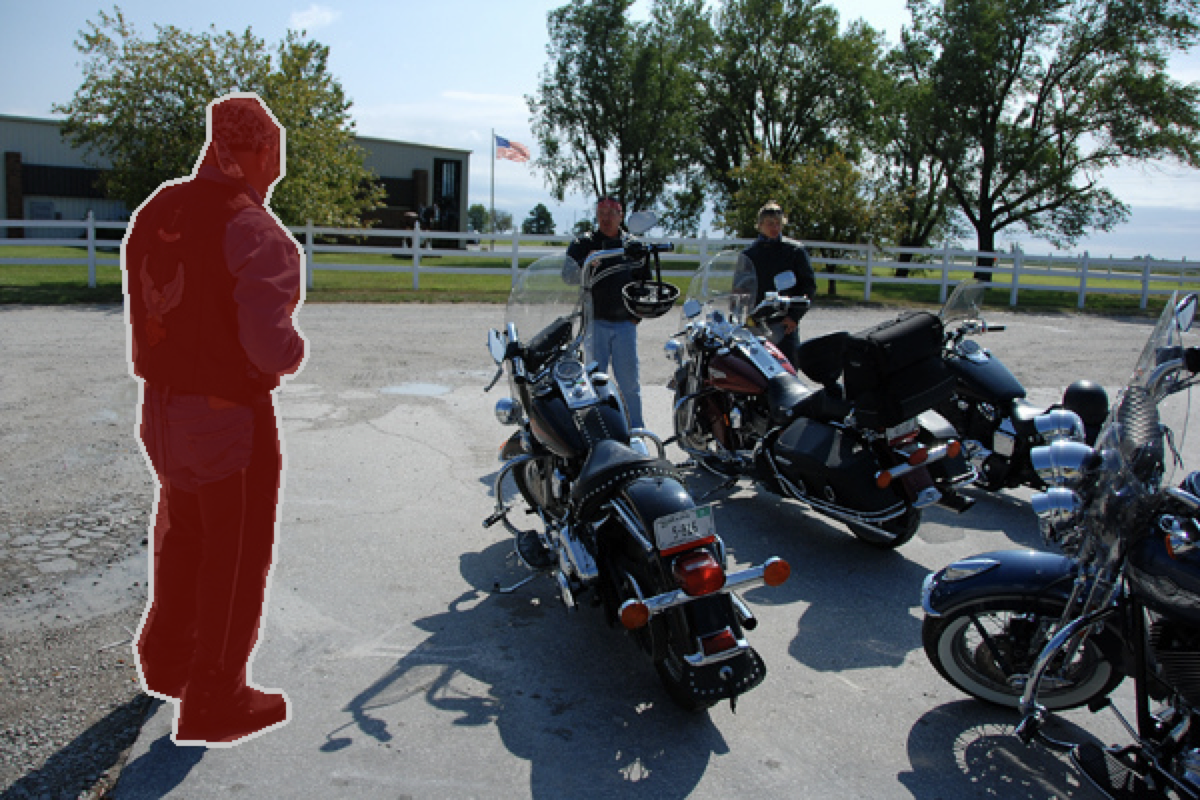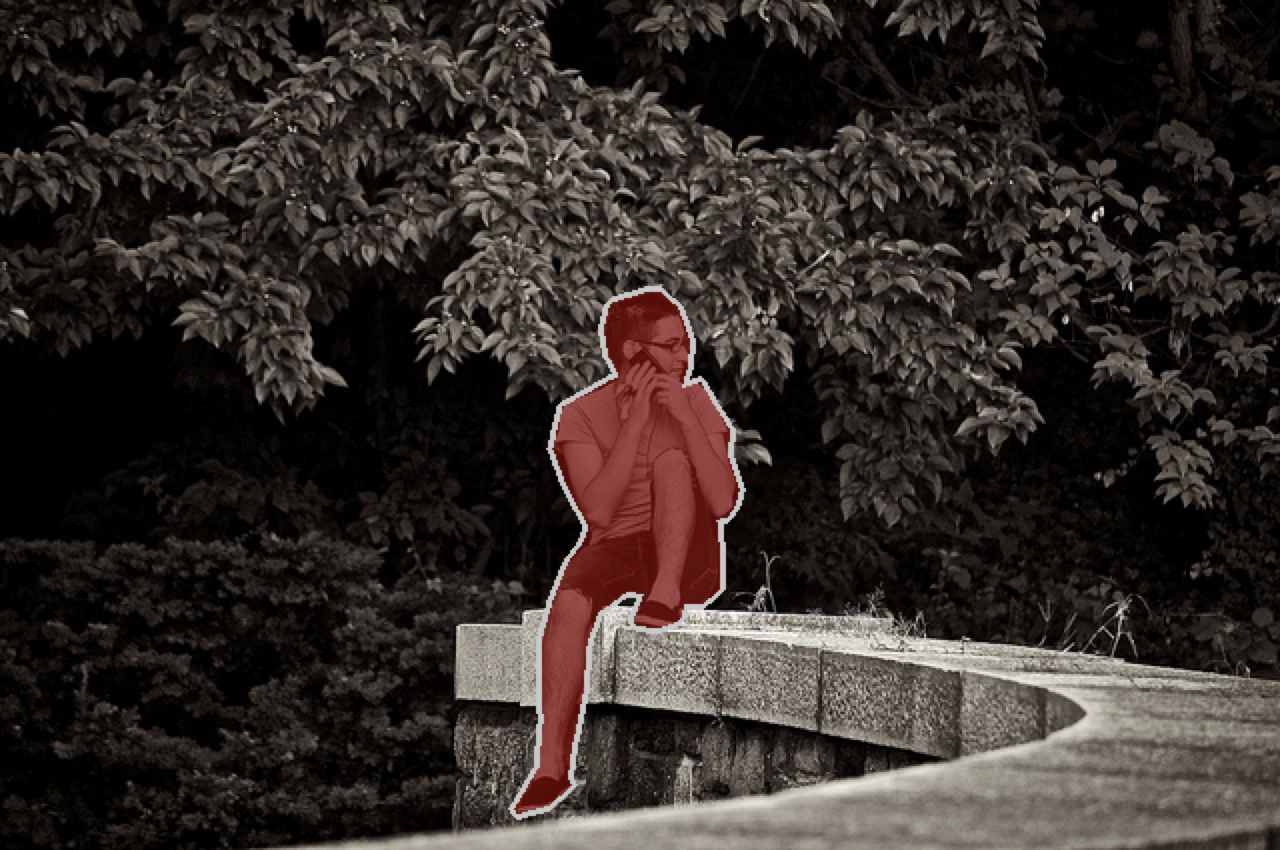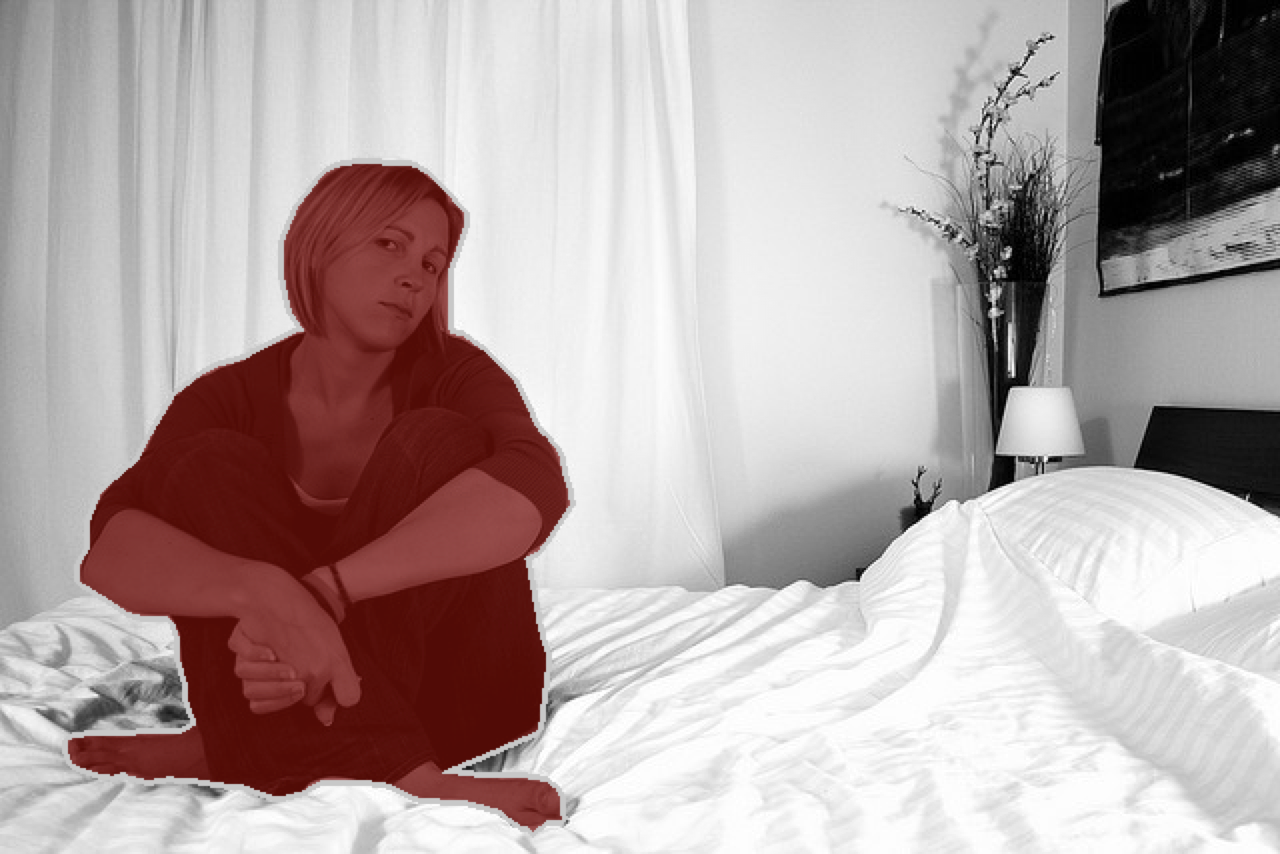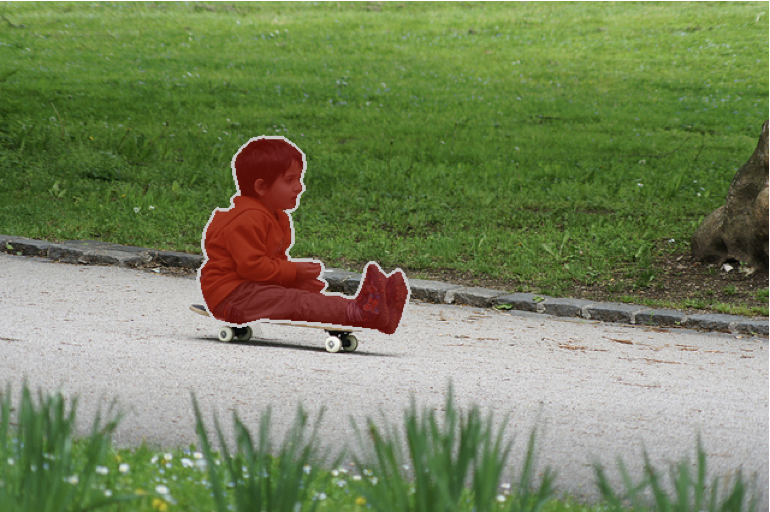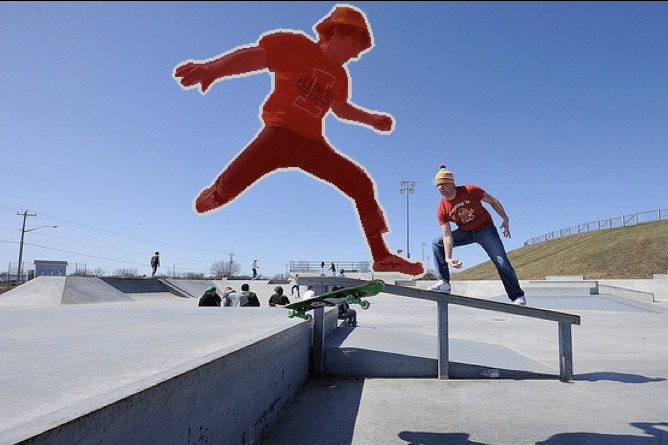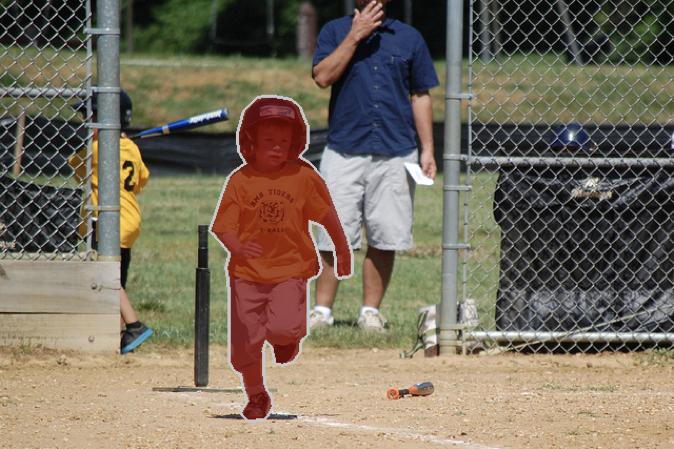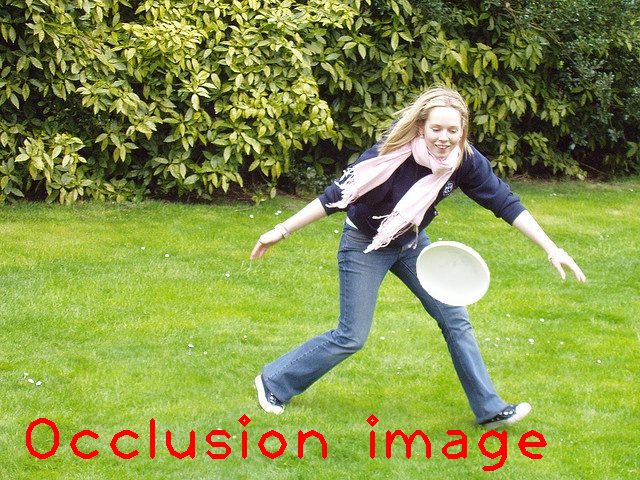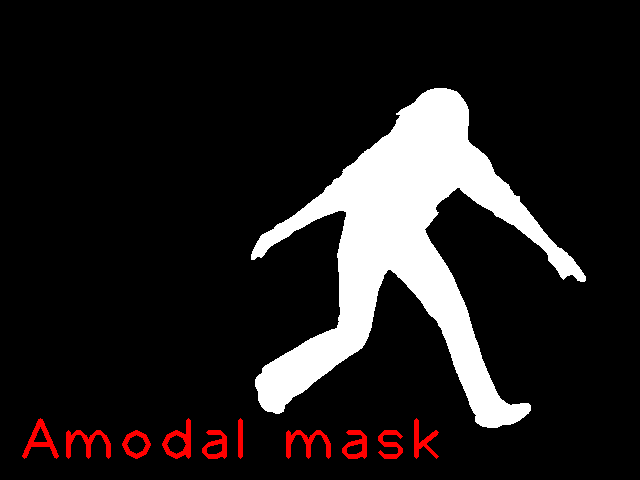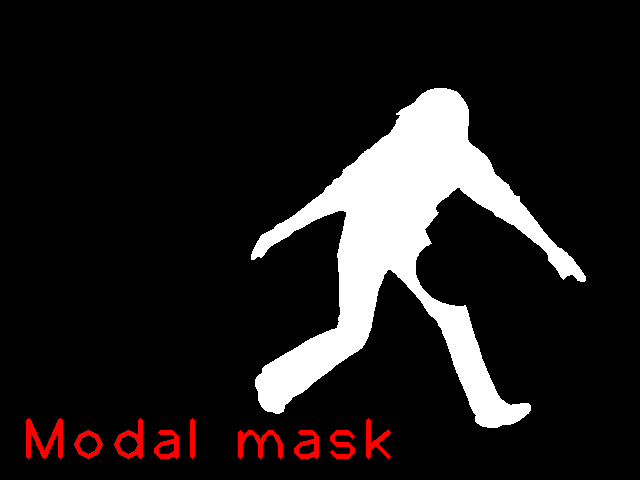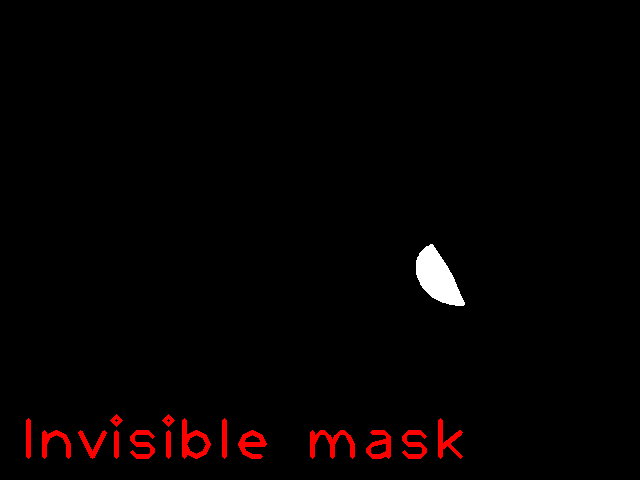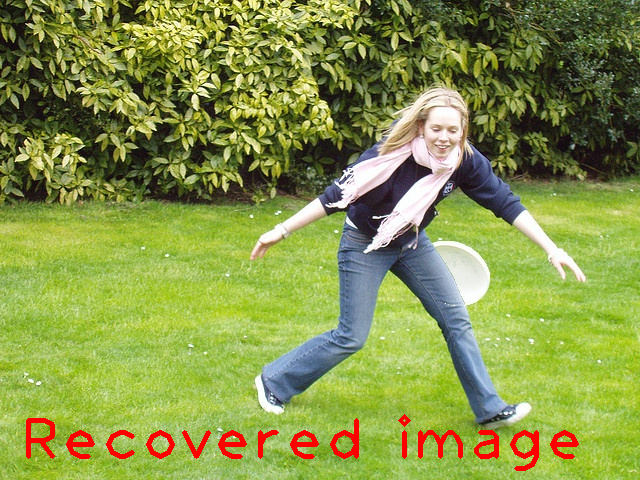The AHP dataset consists of 56,599 images in total which are collected from several large-scale instance segmentation and detection datasets, including COCO, VOC (w/ SBD), LIP, Objects365 and OpenImages. Each image is annotated with a pixel-level segmentation mask of a single integrated human.
The dataset is initially proposed to solve the task of human de-occlusion. We believe our dataset can be leveraged in other human associated tasks and inspires more creative ideas.
Data Splits
- Train: Totally 56,302 images with annotations of integrated humans.
- Valid: Totally 297 images of synthesized occlusion cases.
- Test: Totally 56 images of artificial occlusion cases.
Since the AHP dataset mainly targets at human de-occlusion. When training, the occlusion cases will be synthesized by occluding the integrated humans with other instances, e.g. COCO. We have no restrictions on the synthesis algorithms. The validation set contains 891 images with the simplest synthesis technique of pasting instances onto humans. And the validation set is augmented from 297 images each with three different occluders. Moreover, the test set contains 56 artificial occlusion cases which can muddle through human visual systems. For more details, please refer to our paper.
Download
Download the AHP images and annotations from Google Drive or BaiduYun(password: trbr).
Applications
Human De-occlusion
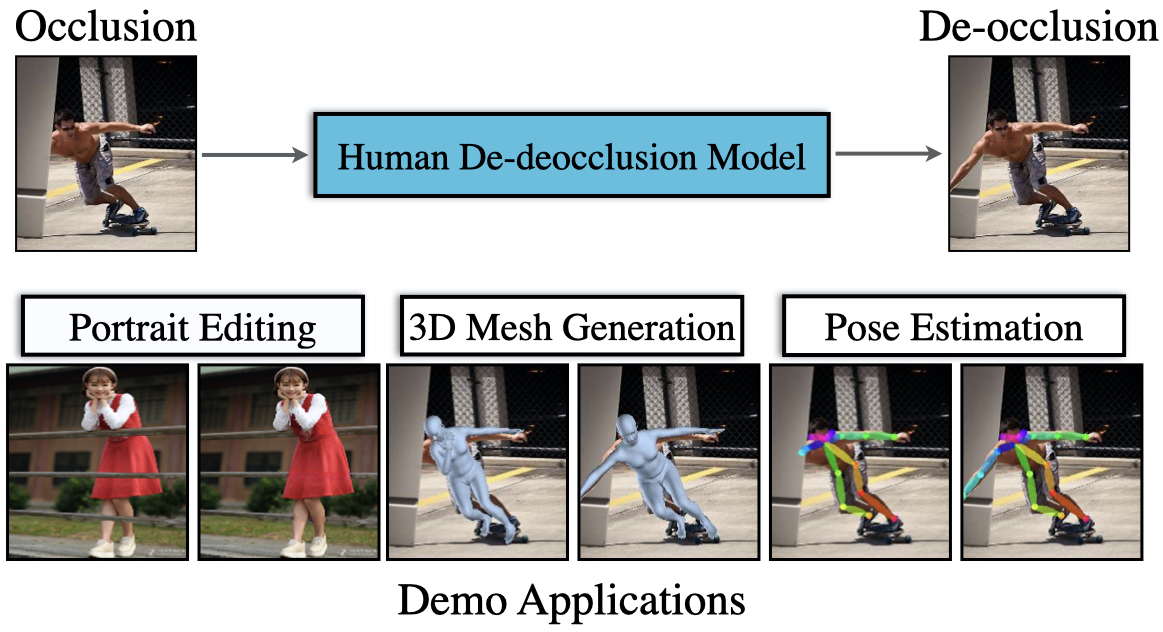
- the number of humans in AHP is comparatively larger than other amodal perception datasets.
- the synthesized occlusion cases own amodal segmentation and visual content ground-truths from real-world scenes;
- the occlusion cases with expected occlusion distribution can be readily obtained.
Publications
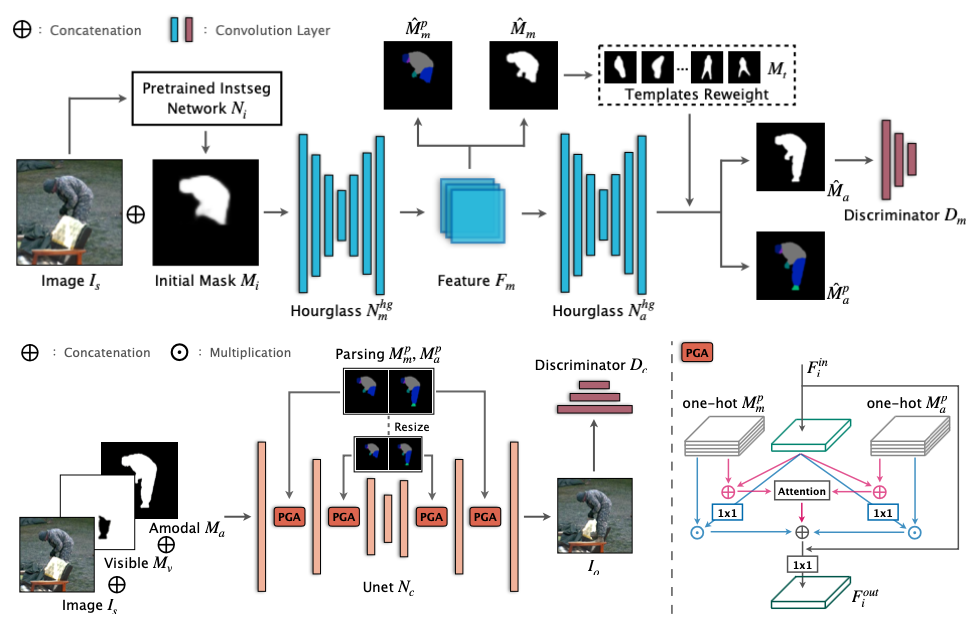
Human De-occlusion: Invisible Perception and Recovery for Humans
Qiang Zhou,
Shiyin Wang,
Yitong Wang,
Zilong Huang, and
Xinggang Wang
Computer Vision and Pattern Recognition (CVPR) 2021
[PDF] [Supp] [BibTex]
@inproceedings{bib_humandeocc2021,
author = { Q. Zhou and S. Wang and Y. Wang and Z. Huang and X. Wang},
title = {Human De-occlusion: Invisible Perception and Recovery for Humans},
booktitle = {Computer Vision and Pattern Recognition (CVPR)},
year = {2021}
}
LICENSE
The annotations in this dataset belong to the ByteDance Ltd. are licensed under a
Creative Commons Attribution 4.0 License.
The organizers of the dataset as well as their employers make no representations or warranties regarding the Database, including but not limited to warranties of non-infringement or fitness for a particular purpose. Researcher accepts full responsibility for his or her use of the Database and shall defend and indemnify the organizers, against any and all claims arising from Researcher’s use of the Database, including but not limited to Researcher’s use of any copies of copyrighted videos that he or she may create from the Database. Researcher may provide research associates and colleagues with access to the Database provided that they first agree to be bound by these terms and conditions. The organizers reserve the right to terminate Researcher’s access to the Database at any time. If Researcher is employed by a for-profit, commercial entity, Researcher’s employer shall also be bound by these terms and conditions, and Researcher hereby represents that he or she is fully authorized to enter into this agreement on behalf of such employer.
The theme of the website is inherited from DAVIS.
